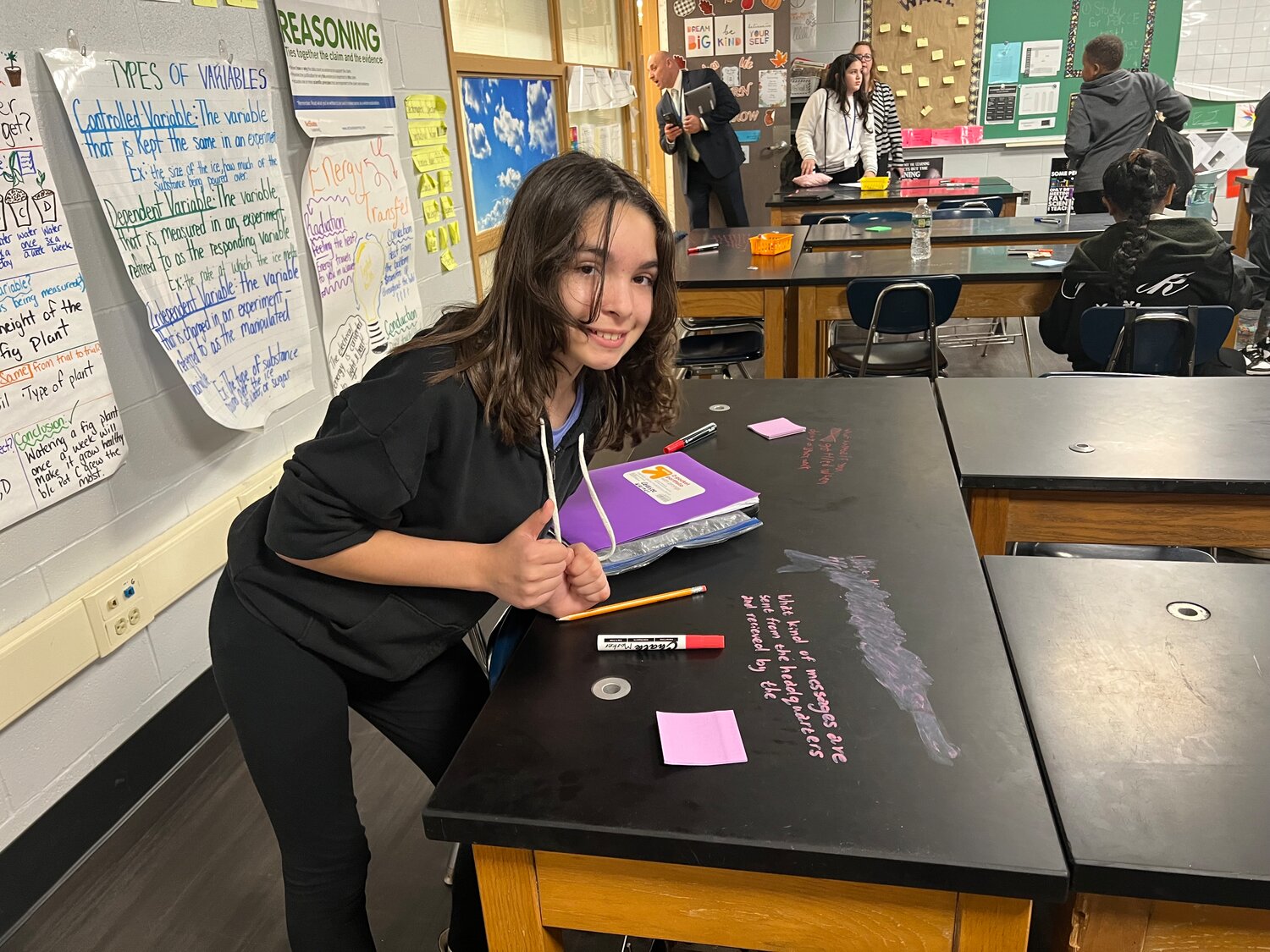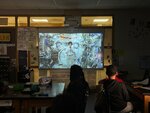Friday, May 3, 2024
Earth to Jasmin Moghbeli: Students ask astronaut questions

The atmosphere was charged with excitement at Baldwin Middle School last Friday when astronaut Jasmin Moghbeli answered students’ questions about life on the International Space Station.
Moghbeli was a mere 250 miles above sea level when the students watched as she addressed their questions live from the ISS. Moving at 17,500 miles per hour, Moghbeli nearly traveled around the entire Earth by the time the event was over.
For many students, Moghbeli, who is from Baldwin and attended the local schools, serves as a powerful source of inspiration, demonstrating that they too have the potential to achieve similar success.
One of the students Moghbeli has inspired is sixth-grader Celeste Warner, one of the many students who got their questions answered by the astronaut. More than a dozen students asked Moghbeli a question via a pre-recorded video, which Moghbeli responded to live, as she was floating in the spacecraft.
“What research projects are you currently working on, on the space station?” Celeste asked.
Moghbeli responded by saying, “We have over 200 experiments going right now. Some of my personal favorites are ones that actually use us as the subject, so our human bodies are being researched.”
Moghbeli explained that humans have been in space for nearly a quarter of a century now. She said that because there are plans to go back to the moon and eventually to Mars, research on the human body is crucial to understanding how the body responds to life in space.
“I was really excited, and I really appreciated the opportunity,” Celeste said about asking Moghbeli a question.
Celeste said that she wants to work in the science field when she gets older, adding that she thinks it’s so fascinating to see how “everything works.” The sixth-grader said she believes that Moghbeli is an inspiration to the Baldwin community.
“She’s kind of like us, and it shows that we can also follow our dreams,” Celeste said.
Another student asked Moghbeli, “How do you tell time in space?” The astronaut explained that because the ISS orbits around the Earth 16 times within a 24-hour period, they don’t use the sun to tell the time. Therefore, everyone aboard the ISS wears a watch that is set to Greenwich Mean Time.
“When it’s nighttime, we turn off the lights on the space station or make the lights dimmer to make us feel like it’s dark outside,” Moghbeli said.
Another student asked Moghbeli how she was able to become an astronaut. Moghbeli explained that she first started dreaming about being an astronaut when she was a student at Lenox Elementary School. At Lenox, she did a report on cosmonaut Valentina Tereshkova, who was the first woman in space.
“I dressed up like her (Valentina Tereshkova), and that’s where the dream started,” Moghbeli said. “As I got older, I just looked more into it and wanted to do it more and more, so I ended up studying aerospace engineering, both for my undergrad and graduate degree.”
Erica Taylor, Baldwin Middle School principal, stressed the importance of having a Baldwin resident as an inspiration for the community. She said that if the students can put effort into their learning and being great citizens, they could achieve anything they desire.
“Jasmin has sat in the seats that these students are sitting in now,” Taylor said, “maybe even had some of the same teachers that these students have now, so there is this real world connection that these students have with Jasmin.”
Anthony Mignella, assistant superintendent for the Baldwin School District, said the district arranged last week’s space station talk by applying for NASA’s Inflight Education Downlink program. It didn’t hurt that Moghbeli is a Baldwin native, which probably helped the district get into this program, Mignella said. He added that district officials applied last spring and found out they were accepted into this program in early September.
“We were only able to submit 20 to 24 student questions,” Mignella said. “So we had all students in all schools submit questions, and then there was a committee that reviewed which questions would be sent to our NASA representative.”
Mignella said that “it’s so motivating” to see Moghbeli fulfill her lifelong dream of becoming an astronaut.
“The message we want students to know is that anything you want to do, you could do, and as long as you put forth that work and energy, the world is yours,” Mignella said.
HELP SUPPORT LOCAL JOURNALISM
The worldwide pandemic has threatened many of the businesses you rely on every day, but don’t let it take away your source for local news. Now more than ever, we need your help to ensure nothing but the best in hyperlocal community journalism comes straight to you. Consider supporting the Herald with a small donation. It can be a one-time, or a monthly contribution, to help ensure we’re here through this crisis. To donate or for more information, click here.
Sponsored content
Other items that may interest you









